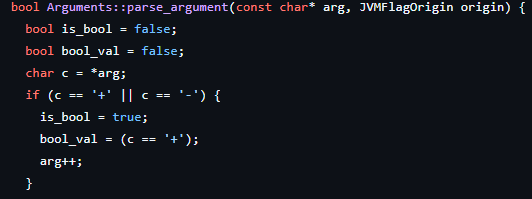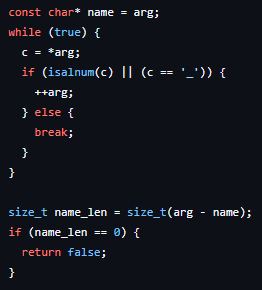Java Virtual Machine: lifecycle and Class Loaders
The Java Virtual Machine (JVM) is the core of the Java ecosystem, providing all the essential tools for running Java code. To fully understand how it works, it is crucial to understand the lifecycle of this interpreter and its implications for the performance and optimization of Java applications.
The entire JVM life cycle begins with a fundamental process called "JVM Bootstrapping" which is responsible for building the entire execution environment and preparing it. It is in this context that: the arguments passed on the command line are interpreted, the JVM code is allocated in memory, the JVM's internal data structures are initialized, memory management begins, and finally the main application thread passes operating. Let's explore each subprocess described in this paragraph individually:
Arguments passed on the command line are interpreted
When the program is started via the command line, the JVM starts a chain of processes responsible for analyzing the arguments provided, which may include initialization parameters — such as: -Xms and -Xmx to define the minimum size and maximum heap, the area of memory responsible for allocating and creating objects in the context of the application — debug specifications or configurations even of the Garbage Collector cycle itself.
Before proceeding, it is important to mention: for the sake of simplicity, we will be analyzing the segment of code that deals with parsing advanced JVM arguments — those that begin with -XX.
To have more clarity, we will use the open-source code from OpenJDK for further references. In the file arguments.cpp located in the directory src/hotspot/share/runtime.arguments.cpp the function that interprets advanced parameters (-XX) by the CLI is this:

Making a brief analysis, the function starts a check to see if the passed argument starts with or -, determining whether the flag is boolean, and also whether it should be deactivated or activated.

After that, the code begins extracting the flag name. Each character is analyzed, if it is not alphanumeric or not _, it ends (meaning the flag name is complete).

After doing the checks and identifying the flag name, the method JVMFlag* flag = find_jvm_flag(name, name_len); is finally invoked to see if there is any configuration available to what was provided.
This is a small summary of how -XX's most advanced arguments are parsed. It is possible to find, however, in this same file that I will mention, the argument processes that start with -X that go through another parsing function:

Example of the flag: -XMS

ARTICLE UNDER CONSTRUCTION
-
 Which String Concatenation Option in Java is Best for You?Understanding String Concatenation Options in Java: , StringBuilder, and concatIn Java, there are multiple options for concatenating strings: using t...Programming Published on 2024-11-16
Which String Concatenation Option in Java is Best for You?Understanding String Concatenation Options in Java: , StringBuilder, and concatIn Java, there are multiple options for concatenating strings: using t...Programming Published on 2024-11-16 -
 How to Fix \"ImproperlyConfigured: Error loading MySQLdb module\" in Django on macOS?MySQL Improperly Configured: The Problem with Relative PathsWhen running python manage.py runserver in Django, you may encounter the following error:I...Programming Published on 2024-11-16
How to Fix \"ImproperlyConfigured: Error loading MySQLdb module\" in Django on macOS?MySQL Improperly Configured: The Problem with Relative PathsWhen running python manage.py runserver in Django, you may encounter the following error:I...Programming Published on 2024-11-16 -
 How to Install MySQL on Ubuntu Without Entering a Password?Passwordless MySQL Installation on UbuntuQuestion:How can I install MySQL on Ubuntu without having to enter a password during the process?Background:I...Programming Published on 2024-11-16
How to Install MySQL on Ubuntu Without Entering a Password?Passwordless MySQL Installation on UbuntuQuestion:How can I install MySQL on Ubuntu without having to enter a password during the process?Background:I...Programming Published on 2024-11-16 -
 Does Go\'s DNS Resolution Feature Cache Lookups?Does Go's DNS Resolution Feature Cache Lookups?The Go programming language's standard library lacks a built-in mechanism for caching DNS looku...Programming Published on 2024-11-16
Does Go\'s DNS Resolution Feature Cache Lookups?Does Go's DNS Resolution Feature Cache Lookups?The Go programming language's standard library lacks a built-in mechanism for caching DNS looku...Programming Published on 2024-11-16 -
 How to Solve \"java.lang.UnsatisfiedLinkError no *.dll in java.library.path\" in Java Web Applications?Troubleshooting "java.lang.UnsatisfiedLinkError no *.dll in java.library.path" IssueApplying static linking methods like System.loadLibrary(...Programming Published on 2024-11-16
How to Solve \"java.lang.UnsatisfiedLinkError no *.dll in java.library.path\" in Java Web Applications?Troubleshooting "java.lang.UnsatisfiedLinkError no *.dll in java.library.path" IssueApplying static linking methods like System.loadLibrary(...Programming Published on 2024-11-16 -
 How do I combine two associative arrays in PHP while preserving unique IDs and handling duplicate names?Combining Associative Arrays in PHPIn PHP, combining two associative arrays into a single array is a common task. Consider the following request:Descr...Programming Published on 2024-11-16
How do I combine two associative arrays in PHP while preserving unique IDs and handling duplicate names?Combining Associative Arrays in PHPIn PHP, combining two associative arrays into a single array is a common task. Consider the following request:Descr...Programming Published on 2024-11-16 -
![Why Am I Getting \"[$injector:modulerr]\" When Migrating to AngularJS 1.3?](/style/images/moren/moren.png) Why Am I Getting \"[$injector:modulerr]\" When Migrating to AngularJS 1.3?AngularJS: Encountering [$injector:modulerr] When Migrating to V1.3In your AngularJS code, you're encountering an error when migrating to version ...Programming Published on 2024-11-16
Why Am I Getting \"[$injector:modulerr]\" When Migrating to AngularJS 1.3?AngularJS: Encountering [$injector:modulerr] When Migrating to V1.3In your AngularJS code, you're encountering an error when migrating to version ...Programming Published on 2024-11-16 -
 How Can I Find Users with Today\'s Birthdays Using MySQL?How to Identify Users with Today's Birthdays Using MySQLDetermining if today is a user's birthday using MySQL involves finding all rows where ...Programming Published on 2024-11-16
How Can I Find Users with Today\'s Birthdays Using MySQL?How to Identify Users with Today's Birthdays Using MySQLDetermining if today is a user's birthday using MySQL involves finding all rows where ...Programming Published on 2024-11-16 -
 How to Solve the \"1418 (HY000) This function has none of DETERMINISTIC, NO SQL, or READS SQL DATA in its declaration and binary logging is enabled\" Error in MySQL?When importing a MySQL database, you may encounter the error "1418 (HY000) at line 10185: This function has none of DETERMINISTIC, NO SQL, or REA...Programming Published on 2024-11-16
How to Solve the \"1418 (HY000) This function has none of DETERMINISTIC, NO SQL, or READS SQL DATA in its declaration and binary logging is enabled\" Error in MySQL?When importing a MySQL database, you may encounter the error "1418 (HY000) at line 10185: This function has none of DETERMINISTIC, NO SQL, or REA...Programming Published on 2024-11-16 -
 How can I display dates in a specific format like \'d-m-Y\' in MySQL?MySQL Date Format and RepresentationWhen creating a DATE field in MySQL, users may encounter issues with dates being stored in a non-user-friendly for...Programming Published on 2024-11-16
How can I display dates in a specific format like \'d-m-Y\' in MySQL?MySQL Date Format and RepresentationWhen creating a DATE field in MySQL, users may encounter issues with dates being stored in a non-user-friendly for...Programming Published on 2024-11-16 -
 Why Does My PyQt4 Button Clicked Signal Always Output the Same Value Within a Loop?Connecting Slots and Signals in PyQt4 Within a LoopIn PyQt4, establishing connections between slots and signals is a fundamental aspect of event handl...Programming Published on 2024-11-16
Why Does My PyQt4 Button Clicked Signal Always Output the Same Value Within a Loop?Connecting Slots and Signals in PyQt4 Within a LoopIn PyQt4, establishing connections between slots and signals is a fundamental aspect of event handl...Programming Published on 2024-11-16 -
 Beyond `if` Statements: Where Else Can a Type with an Explicit `bool` Conversion Be Used Without Casting?Contextual Conversion to bool Allowed Without a CastYour class defines an explicit conversion to bool, enabling you to use its instance 't' di...Programming Published on 2024-11-16
Beyond `if` Statements: Where Else Can a Type with an Explicit `bool` Conversion Be Used Without Casting?Contextual Conversion to bool Allowed Without a CastYour class defines an explicit conversion to bool, enabling you to use its instance 't' di...Programming Published on 2024-11-16 -
 How to Perform a Global Find and Replace Across an Entire MySQL Database?Finding and Replacing Entire MySQL DatabaseThe goal is to perform a global find and replace operation across an entire MySQL database. The question pr...Programming Published on 2024-11-16
How to Perform a Global Find and Replace Across an Entire MySQL Database?Finding and Replacing Entire MySQL DatabaseThe goal is to perform a global find and replace operation across an entire MySQL database. The question pr...Programming Published on 2024-11-16 -
 How to Convert Strings to Doubles in C++: A Simple Guide Using `std::istringstream` and `std::stod`Converting Strings to Doubles in C In C , converting a string to a double can be achieved using the std::istringstream and std::stod functions.#incl...Programming Published on 2024-11-16
How to Convert Strings to Doubles in C++: A Simple Guide Using `std::istringstream` and `std::stod`Converting Strings to Doubles in C In C , converting a string to a double can be achieved using the std::istringstream and std::stod functions.#incl...Programming Published on 2024-11-16 -
 Why are Lambdas More Optimizable than Plain Functions in C++?Why Lambdas Allow for Enhanced Compiler Optimization Compared to Plain FunctionsThe C Standard Library (Second Edition) by Nicolai Josuttis asserts ...Programming Published on 2024-11-16
Why are Lambdas More Optimizable than Plain Functions in C++?Why Lambdas Allow for Enhanced Compiler Optimization Compared to Plain FunctionsThe C Standard Library (Second Edition) by Nicolai Josuttis asserts ...Programming Published on 2024-11-16
Study Chinese
- 1 How do you say "walk" in Chinese? 走路 Chinese pronunciation, 走路 Chinese learning
- 2 How do you say "take a plane" in Chinese? 坐飞机 Chinese pronunciation, 坐飞机 Chinese learning
- 3 How do you say "take a train" in Chinese? 坐火车 Chinese pronunciation, 坐火车 Chinese learning
- 4 How do you say "take a bus" in Chinese? 坐车 Chinese pronunciation, 坐车 Chinese learning
- 5 How to say drive in Chinese? 开车 Chinese pronunciation, 开车 Chinese learning
- 6 How do you say swimming in Chinese? 游泳 Chinese pronunciation, 游泳 Chinese learning
- 7 How do you say ride a bicycle in Chinese? 骑自行车 Chinese pronunciation, 骑自行车 Chinese learning
- 8 How do you say hello in Chinese? 你好Chinese pronunciation, 你好Chinese learning
- 9 How do you say thank you in Chinese? 谢谢Chinese pronunciation, 谢谢Chinese learning
- 10 How to say goodbye in Chinese? 再见Chinese pronunciation, 再见Chinese learning







![Why Am I Getting \"[$injector:modulerr]\" When Migrating to AngularJS 1.3?](http://www.luping.net/uploads/20241116/1731750139673868fb1fcc7.jpg)

















